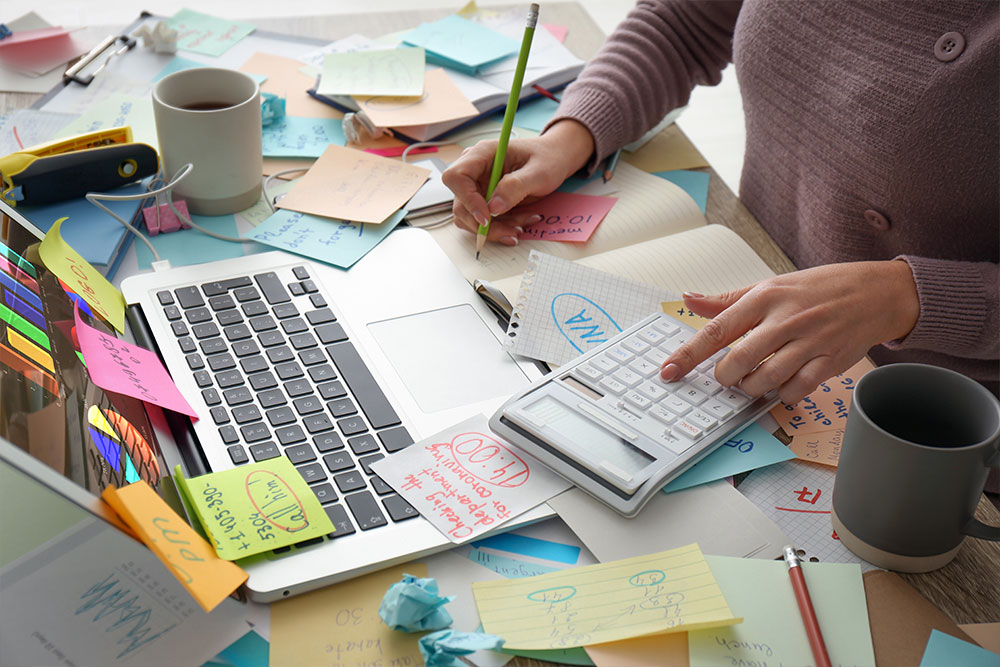Picture this: You’re sighing contentedly at the end of each workday, knowing that you completed everything on your to-do list. And knowing that you were at the top of your game in terms of creativity, doing your tasks quickly and effectively. As you leave work (or log off if you’re still working from home), do you catch yourself whistling?
But what about the flipside—you end the day fatigued and slumped behind your work station, packed with unfinished projects?, You may not want to, but you’re the star of that unproductivity show. But, don’t despair. There is a way to change how your typical workday goes, if you don't like your present performance.

Most of us aren't as productive as we'd want to be for two reasons: we have terrible habits that hinder our productivity at work, and we're reactive rather than proactive, putting out fires rather than making progress toward our objectives.

The remedy is straightforward, though not necessarily simple. We may replace our negative habits and reactive patterns with proactive habits that allow us to control our own workdays. Follow these suggestions, as shared by Ms Bhavya Arora, an internationally-certified psychotherapist, practising in New Delhi, for increasing productivity at work, whether you’re working from home or office, to become your best, most productive self.
• Quick wins first: Smaller tasks that tend to take less time but can help you tick off quite a bit on your task list, can help kicking your dopamine levels to give you a mood and productivity boost!
• "Better done than perfect" mindset: A lot of times, we tend to lose motivation when we feel intimidated by the process of getting the task done "perfectly" or worrying about the end result. She adds that this ‘better done than perfect’ mindset has helped her navigate her own anxiety towards tasks, and helped her achieve targets on time. Once you get started, you’re more likely to finish the task, and have the motivation to make improvements wherever required.
• Keep the big tasks for the later part of your day: Studies show that given the ticking clock of finishing the work before going home can be an active drive for employees to complete the tasks that they would otherwise slack with. So, if there’s a task that is important or big, the best time to do it would be before you head home, as it will ensure that you put your best foot forward as well as finish the task on time.
• Regulate your emotions: Being unaware of the emotions weighing you down may lower your productivity. Active emotional regulation allows you to effectively acknowledge and navigate your emotions for better work outcomes and workplace collaborations. You can try deep breathing exercises, neck and eye movements so that your body moves a little, and even writing down some of your thoughts just to let it out of your system.

• Cultivate safety at the workplace: "Safety" is key for a healthier work culture. Our body responds with anxiety when we feel unsafe, and persistent and high levels of anxiety have been known to lower work outputs. Hence, it is both, in the benefit of the health of employees and the organisation to continue cultivating safety at work place.
• Take active "movement" breaks: While taking breaks is always recommended, often employees confuse the act of taking breaks with scrolling social media or getting a cup of coffee in the pantry. Research studies recommend taking active breaks that involve movements of the larger limbs (arms and legs) to increase productivity.
• Delegate where you can, when you can: Having tasks that may feel rather 'unchallenging' for employees can lower their morale, effectiveness, and motivation. Hence, it is important that employees be given work as per their competencies that engages them and continues to challenge them to continue keeping them driven and motivated.
• Standing meetings: This applies especially if you’re working from office, and is exactly how it sounds. Most organisational meetings communicate to their employees that they expect them to "be on your toes" or "think on your feet" with work. Standing meetings is being revolutionised as the way forward for corporate communications as the act of standing offers employees higher cognitive arousal, less territoriality and better group performance.